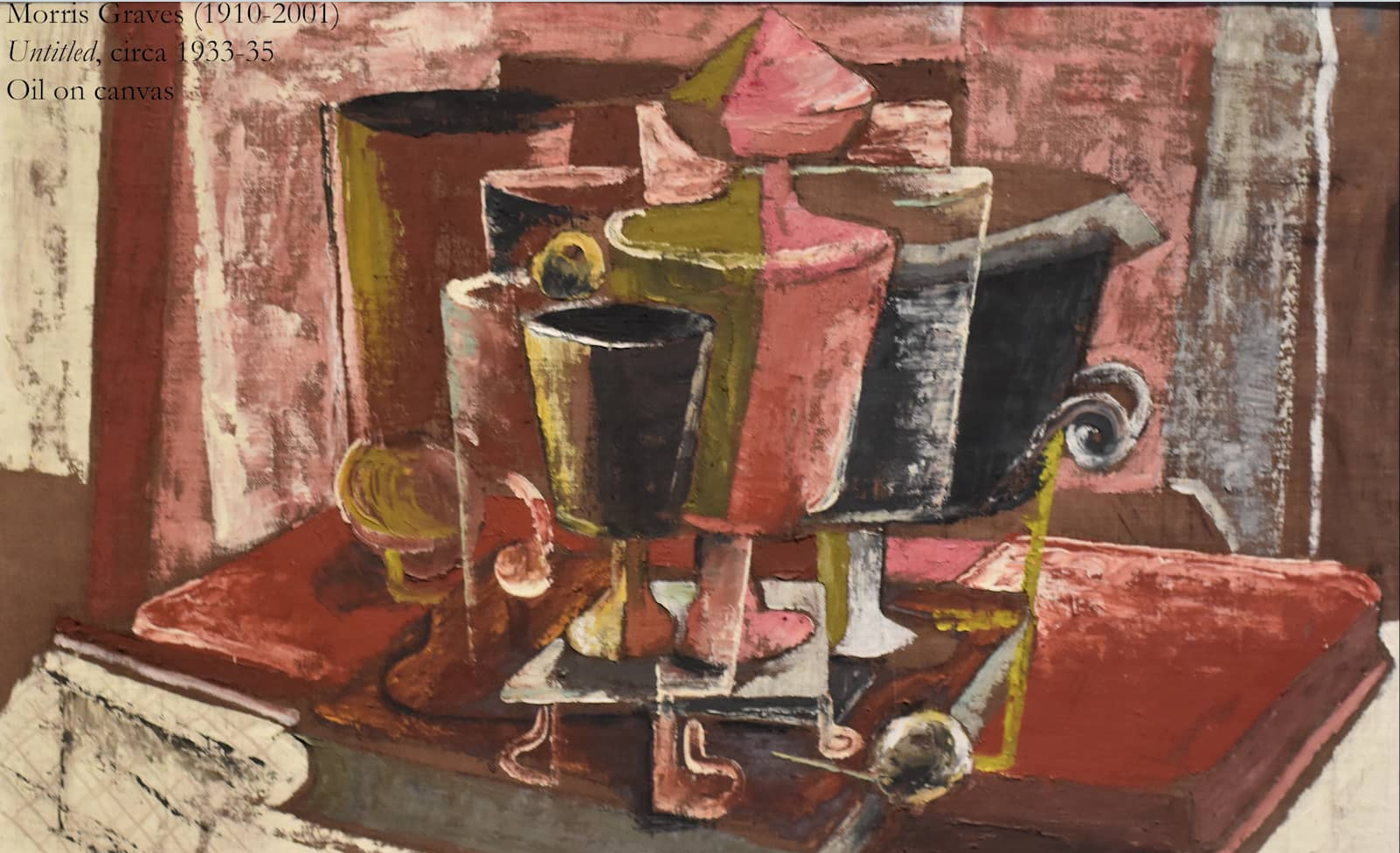For today’s “Virtual Visit” during Cascadia’s temporary closure, curator David Martin explores the work of two notable artists featured in The Lavender Palette: Excerpts exhibition.
Morris Graves and Guy Anderson are two of the four artists who were featured in a 1953 LIFE magazine article titled “Mystic Painters of the Northwest.” The article stated that the paintings of Anderson and Graves, along with the works of Mark Tobey and Kenneth Callahan, “have one characteristic in common: they embody a mystical feeling toward life and the universe.”
Morris Graves (1910-2001) was born in Fox Valley, Oregon and spent part of his childhood near Seattle, surrounded by a rich natural environment that would greatly influence his later work. In 1928, he became a merchant seaman, a job that took him to China and Japan and sparked his interest in Taoism and Zen Buddhism. Largely self-taught, Morris won his first prize in the Northwest Annual Exhibition at Seattle Art Museum in 1933. His works were later seen by a curator visiting from the Museum of Modern Art in New York and he was selected to be featured in Americans 1942: 18 Artists from 9 States, an exhibition at MoMA that established his national career.
Graves traveled extensively throughout his life and was featured in dozens of solo museum shows during his career. His work has come to be known for combining the spirit of American Transcendentalism with East Asian philosophies. Graves put it this way: “I paint to evolve a changing language of symbols, a language with which to remark upon the qualities of our mysterious capacities which direct us toward ultimate reality. I paint to rest from the phenomena of the external world–to pronounce it–and to make notations of its essences with which to verify the inner eye.”
Guy Irving Anderson (1906-1998) was born in Edmonds, Washington and he too was inspired by the natural beauty of the region. On a scholarship in 1929, he spent the summer studying art at the Tiffany estate on Long Island, New York where he met Morris Graves. After returning to the Northwest, Anderson later worked with Dr. Richard Fuller at the Seattle Art Museum where he had the opportunity to study and draw influence from the museum’s collection of Asian paintings and historical pieces.
Anderson had studied music in his youth and enjoyed playing the piano throughout his life. His love of classical music can be seen in the rhythmic compositions of his paintings. According to Anderson: “Timing has to be in operation throughout the composition, making accents at the predetermined points of stress. This is pictorial timing. The other kind, the all-over timing of Pollock and Mondrian which gives equal stress to every area of the picture surface, doesn’t interest me. Life is not equally timed. Fingers accent an arm, blossoms accent a tree. Painting which is timed in this way is truer to what existence is all about.”
We hope you enjoyed today’s Virtual Visit to Cascadia’s The Lavender Palette: Excerpts exhibition. Next week will mark one month since the museum closed to protect our community and to do our part to help slow the spread of COVID-19. We are truly looking forward to the day when we can open our doors and welcome you back to the museum!
I ask that you please consider supporting the museum during this challenging time by making your donation online. With your help, we will get through this.
Stay healthy, be well, and thank you for being part of our Cascadia community.


